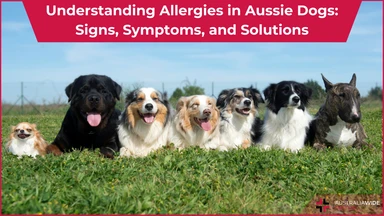Pet First Aid: Preventing Heat-related Illness in Dogs


Heat-related illness refers to the spectrum of symptoms that occur when a dog’s body temperature rises above the normal range necessary to maintain homeostasis in the body.
Heat-related illness occurs in dogs much as in humans – because of exertion or a hot environment accompanied by the inability to cool the body properly. Both humans and dogs use techniques of evaporative cooling. Humans sweat—dogs pant.
Although heat-related injuries account for a low percentage of clinic visits (only about 0.04%, according to this study in 2016), the fatality rate is high. One study reports a fatality rate of 14%. In other words, heat-related illness requiring clinical care is not very common, but it is very serious.
Associated risk factors include breeds with brachycephalic skull shape (e.g., chow chow, bulldogs, pugs), being overweight for age and breed, having a healthy weight over 50 kg, and having dense hair coats.
It is essential that, as a pet owner, you are equipped to recognize the signs and symptoms of heat-related injury, provide first aid, and seek professional veterinary care.
Heat stress, heat exhaustion, and heat stroke are often used interchangeably for this type of illness. There is currently no reliable or widely accepted way to differentiate between the three conditions. In general, the three conditions represent the advancement of heat-related injury and its impact on organ function, with heat stress meaning the smallest impact and heat stroke representing the most significant impact.
A dog may suffer from exertional or non-exertional illness.
Exertional heat-related illness occurs when body temperature elevates beyond normal limits for extended periods because of strenuous exercise. Dogs’ bodies are capable of strenuous physical activity. But, on sweltering and humid days, they may not be able to cool down efficiently even after resting.
Non-exertional heat-related illness usually occurs because of environmental factors. Dogs that are left in cars in the sun, tied up outside on especially hot and humid days, or kept inside without air conditioning for long periods can experience heat-related illness.
The following are common signs and symptoms of a dog experiencing illness. Note that some dogs will compensate for a long time before showing symptoms.
Most symptoms are the same as those shown during strenuous physical activity. If your dog’s symptoms return to normal within several minutes after resting, there is likely no heat-related illness. However, it is time to act if symptoms persist or worsen after rest.
When approaching treatment for heat-related illness in dogs, think: calm and cool.
Start by relocating the dog to a calm environment with low stimuli and a cool ambient temperature if possible. Encourage the dog to rest while you work to cool its body. The dog will work to cool his own body by panting and releasing heat via evaporation. Their bodies also redirect the blood supply to their extremities. So, pouring cool water over the legs, paws, ears, and body will help cool them. If pouring water stresses the dog, you can try wrapping him in cooled towels.
Other options include:
Reevaluate their condition after 10 minutes to avoid over-cooling.
If you have a thermometer available to check the dog’s temperature, take a rectal temperature. The average body temperature for most dogs is 38.3 to 39.2 degrees Celsius. Some dogs experience heat-related illnesses without showing an elevated body temperature from a rectal reading.
Most importantly, do not wait to begin cooling therapy. Start treatment immediately to reduce the likelihood of organ damage because of prolonged hyperthermia.
The approach to preventing heat-related illness depends on your pet’s environment.
If you are spending time outdoors with your dog, ensure they have access to water and shade. If they exercise on hot and humid days, provide frequent rest and water breaks. Keep their paws off the pavement in the sun. If you have a flat-faced breed, consider limiting time outside on very hot days. Bring along an insulated water bottle full of cold water to give the dog.
If your dog stays at home and you live in an environment prone to heat waves or power outages, consider investing in an alarm system that will notify you if your home’s temperature rises above a certain level. These are often included in home security systems.
Lastly, do not keep your dog tied to a lead in the sun on hot and humid days. They must have access to shade and water to be safe. On hotter days, the only safe space is indoors.
If you want more information on pet first aid, check out our resource library.

April 16, 2024
Like humans, our canine friends are susceptible to allergies, which can significantly affect their quality of life. This article aims to shed light on common allergies in dogs, their signs and symptoms, treatment options, and advice on when to consult a veterinarian.

March 19, 2024
From respiratory distress to changes in droppings and abnormal behaviours, this guide outlines the key indicators of illness that require immediate attention. By understanding these warning signs, bird owners can take proactive steps to ensure their feathered companions receive timely medical treatment, ultimately promoting their health and well-being.

February 12, 2024
In the hustle and bustle of our daily lives, it's easy to overlook that our furry friends may not be leading lives as fulfilled as we'd like. Just like humans, dogs too can suffer from monotony, especially those spending large amounts of time indoors. Recognizing and addressing boredom in our canine companions is crucial for their overall well-being.